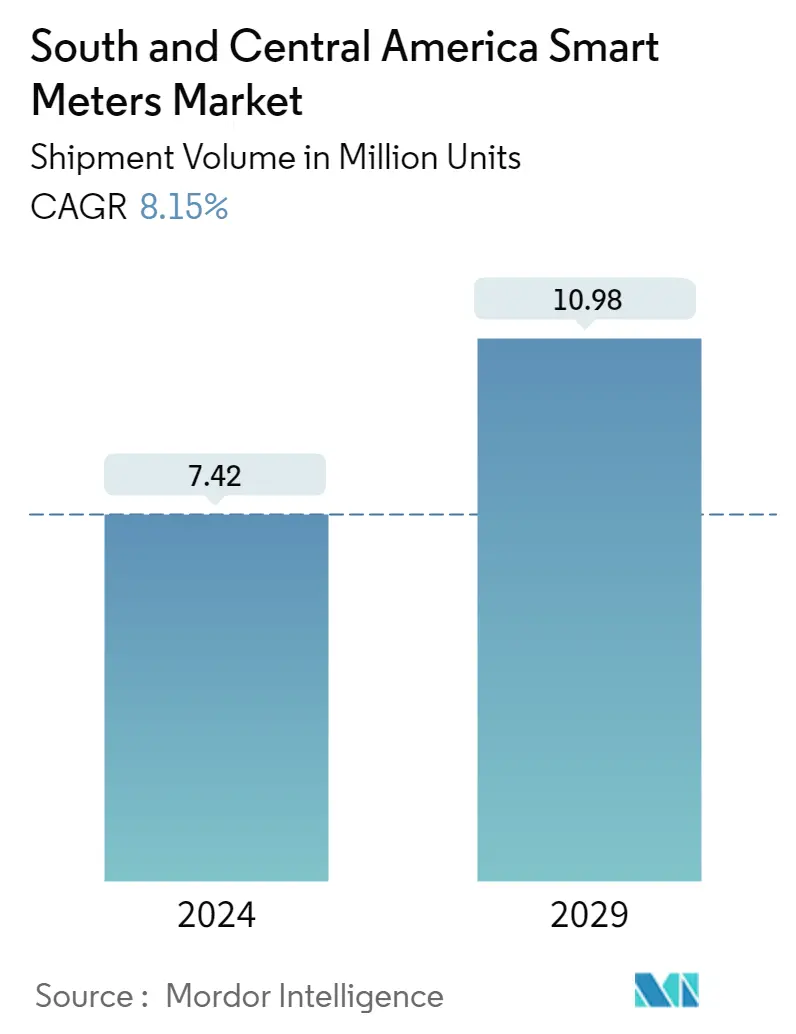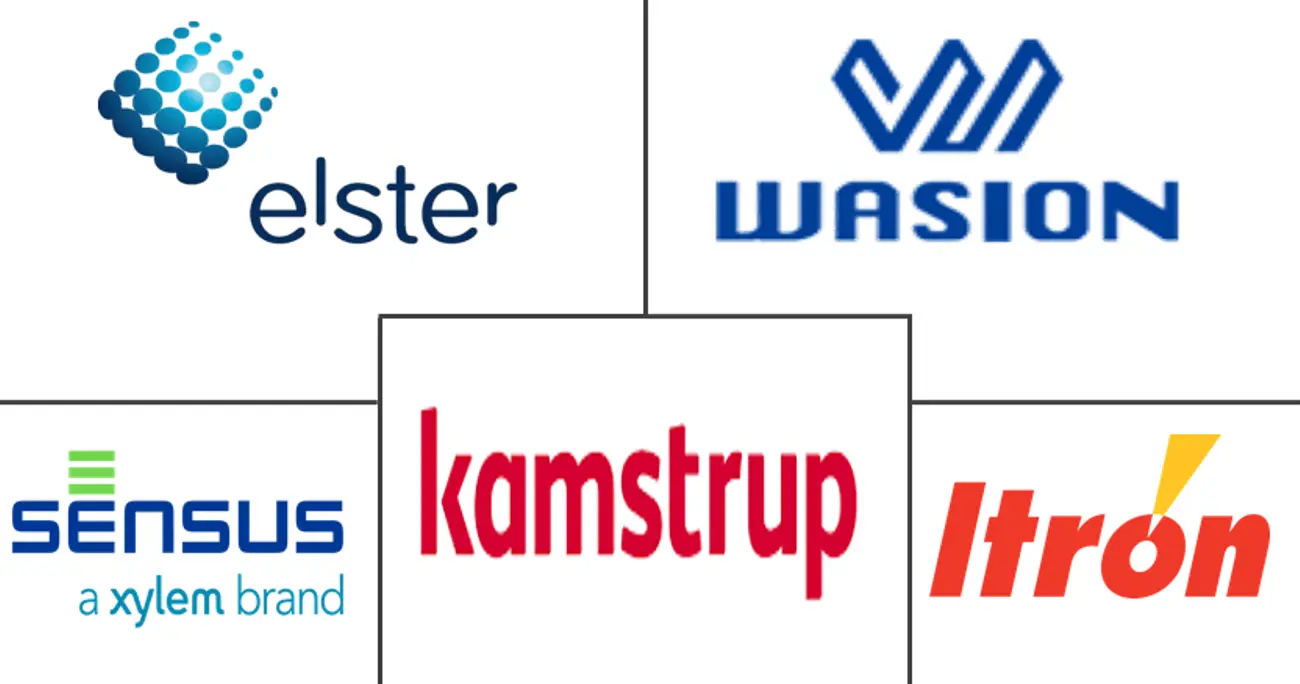Market Size of South and Central America Smart Meters Industry

| Study Period | 2019 - 2029 |
| Base Year For Estimation | 2023 |
| Market Volume (2024) | 7.42 Million units |
| Market Volume (2029) | 10.98 Million units |
| CAGR (2024 - 2029) | 8.15 % |
| Market Concentration | Medium |
Major Players
*Disclaimer: Major Players sorted in no particular order |
Need a report that reflects how COVID-19 has impacted this market and its growth?
South and Central America Smart Meters Market Analysis
The South and Central America Smart Meters Market size in terms of shipment volume is expected to grow from 7.42 Million units in 2024 to 10.98 Million units by 2029, at a CAGR of 8.15% during the forecast period (2024-2029).
The recent COVID-19 outbreak and nationwide lockdown impacted the overall rollout of smart meters in South and Central America. The global COVID-19 pandemic resulted in lockdowns in various parts of the region, which halted several operations across the industries. As a result, the shipments and installations of smart meters also witnessed a downfall.
- The market is primarily driven by governmental roll-outs for large-scale incorporations, in the absence of which the primary drivers are theft prevention and reduction of other non-technical losses, along with functionality improvements, such as the ability to control utilities remotely and time-based tariffs. However, countries lacking supporting legislation are witnessing slow growth in the market, with the patchy implementation of the technology. This also inhibits these systems from performing at their optimal level.
- Mexico and Brazil lead the Latin American region when it comes to the adoption of smart meters. In Brazil, utilities, such as AES Eletropaulo, Eletrobras, Celpa, Light, and others, have experimented with smart meters from pilot-scale projects to multimillion-meter deployments. For instance, in Mexico, state-run utility CFE is in the process of converting 30.2 million customers to smart meters by 2025. New markets, such as Columbia, Peru, and Chile, are also expected to witness a demand for smart meters over the forecast period.
- The market for smart water meters, however, is in a nascent stage in the region, lacking any large-scale deployments. However, the water scarcity in some nations has led to the initiation of trial phases. According to the estimates by the Development Bank of Latin America (CAF), the water infrastructure demand in Latin America requires an investment of about 0.3% of the GDP until 2030.
- The region is characterized by enormous variations in the economic, social and political structures for private investments. This level of privatization is expected to invite foreign investments to adopt smart technology solutions in the water distribution sector in the region. For instance, in March 2020, Esval and Aguas del Valle chose TaKaDu to improve its water network management and protect the water resources of Chilean regions IV and V. The solution is expected to be implemented in 100% of the group's networks, corresponding to about 7,000 km. Currently, nearly 13,000 sensors have been deployed.
- This increase in population has caused an increase in the consumption of water. Currently, agriculture accounts for 77% of water consumption; domestic uses account for 13% and industry for 10%. With considerable economic activities and an increasing population, the Mexican residents of northwest, semi-arid, arid north, and central regions use an average of 75 gallons of water a day, which is more than that of a US resident.
- Further, to encourage renewable energy investment in Mexico, the administration addressed infrastructure bottlenecks. It realized that as power demand grows, the aging transmission lines need to be upgraded to reduce losses. Further, the transmission and distribution losses have been attributed to infrastructure, illegal access, poor metering, and incorrect billing, to name a few.
- In line with the country's Uruguay Digital 2020 Agenda, UTE plans installation project of smart meters in households and companies in the country. As part of the World Day of the Information Society, in May 2019, the company announced its' commitment to reach 50% of its 1,500,000 customers by the end of 2020.
